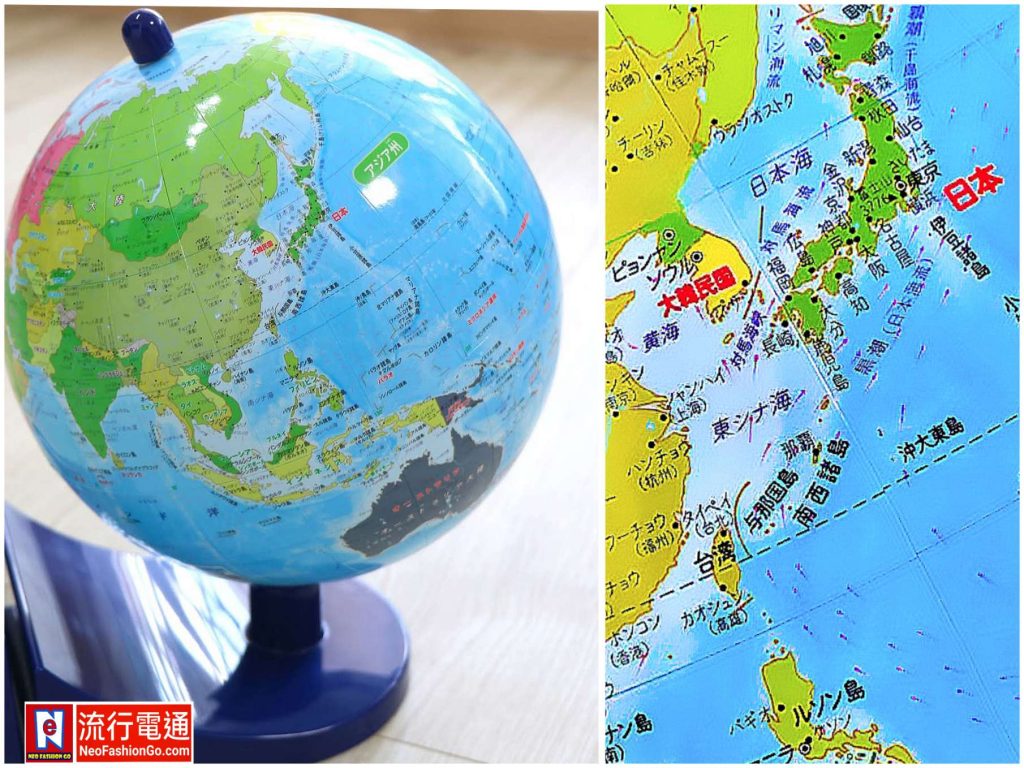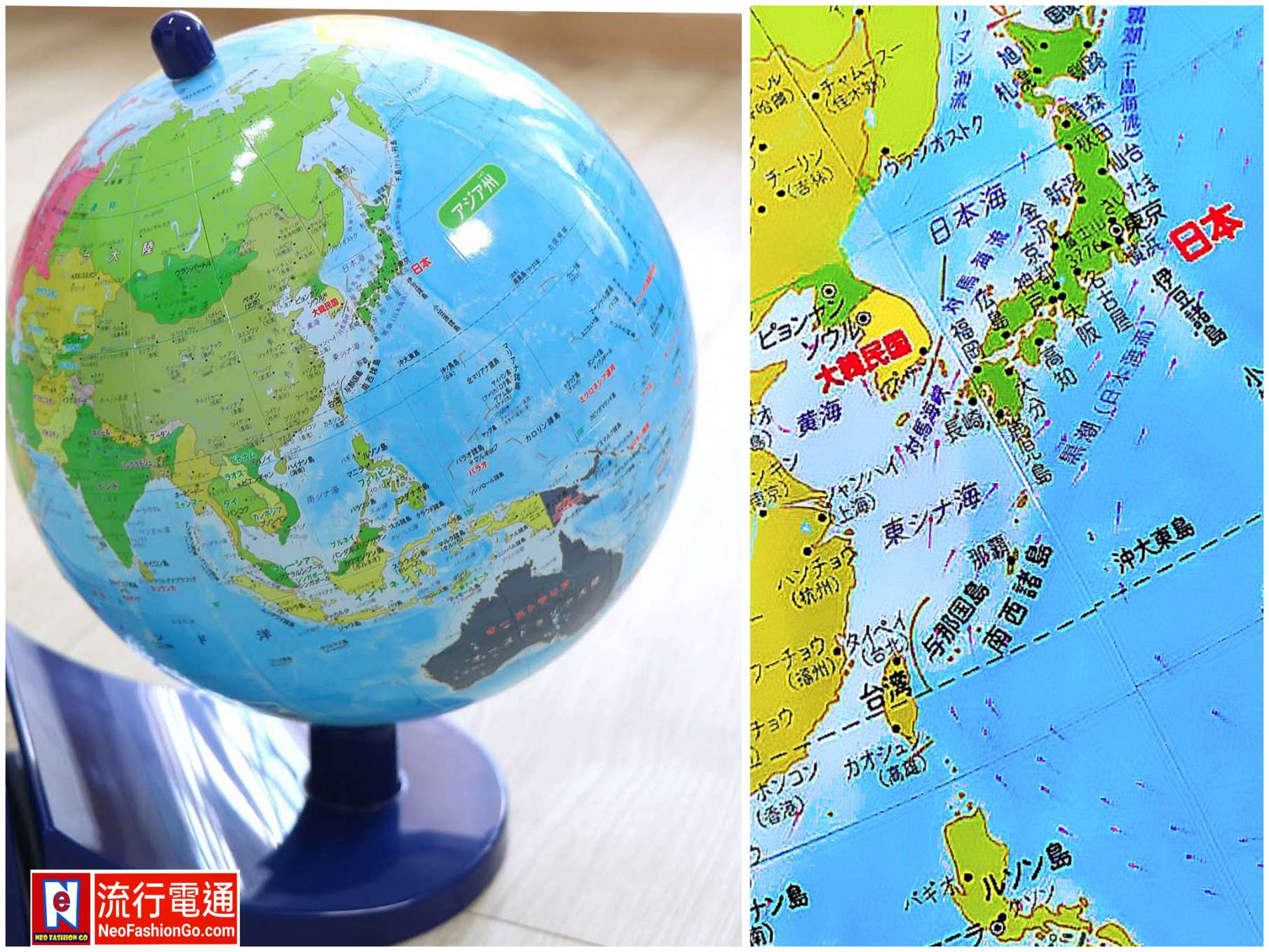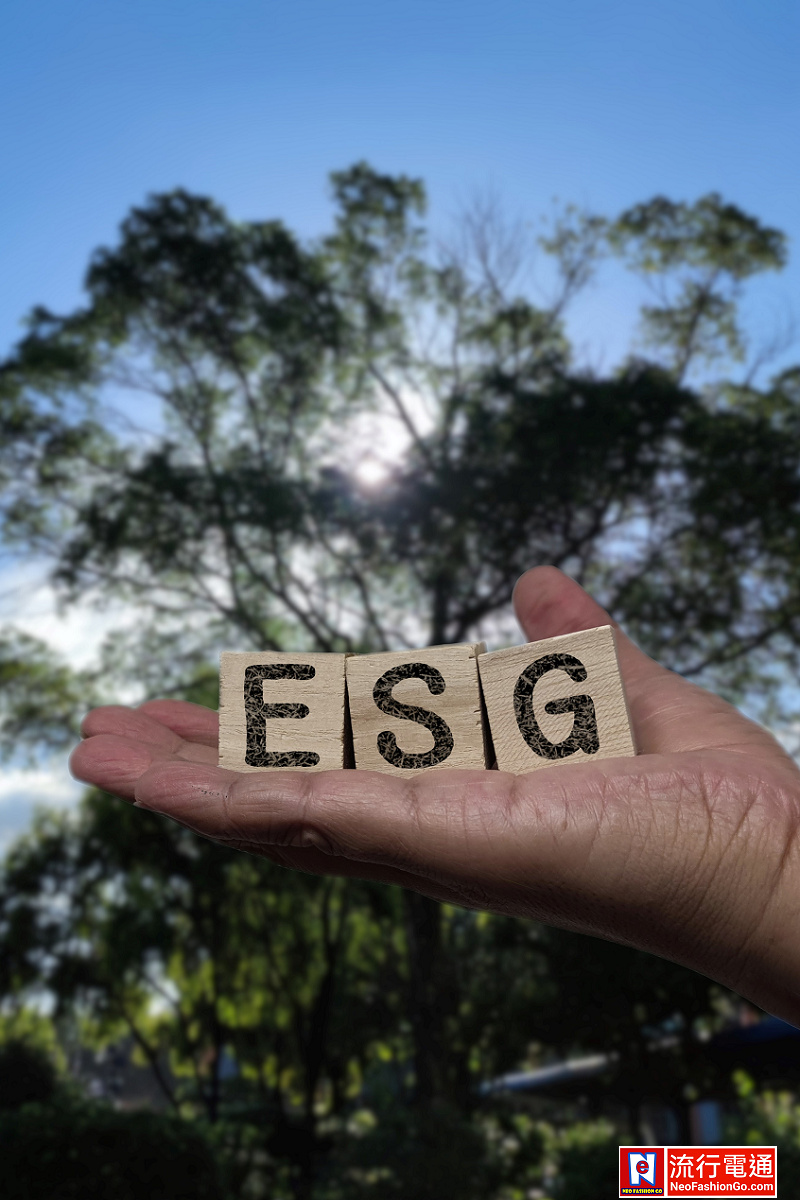

【品傳媒娛樂時尚中心總編 & NeoFashionGo & 華人世界時報 應瑋漢】
Advocacy Manifesto of the Asia-Pacific ESG World Star Alliance
ESG Project Aster 318 (318 Initiative – 3 Pillars, 1 Alliance, ∞ Future)
“Let ESG and sustainability return to the human heart; let ‘Eastern ESG 3.0’ reshape the governance of our future.”
The revival of the Asian CSR 2.0 paradigm: “Eastern ESG Benevolent Enterprise Certification.”
The 318 Sustainability Initiative advocates for a movement that is citizen-led, grounded in fair trade, and aimed at infinite shared prosperity.
3 Pillars, 1 Alliance, ∞ Future
The Symbolism:
3 → The three core pillars of ESG (Environment, Social, Governance).
1 → The concept of “One Platform / One Earth / One Commonwealth.”
8 → The symbol of infinity (∞), representing sustainability and a circular economy.
Conceptual Framework of “Eastern ESG 3.0”
(Eastern Philosophy × Modern Governance × AI Technology)
“The Eastern path of civilizational governance: a governance of warmth and soul. Let us give systems a soul and sustainability a human warmth. Let sustainability return to the human heart, and let civilization reshape the governance of our future.” — Kent Ying
If Western ESG is about “how to do good without compromising profit,” Eastern philosophy complements this by asking, “how to become a civilization capable of doing good.” The West gives ESG its structure; the East gives ESG its soul. Only when both resonate in unison can we create a holographic universe of sustainability.
“ESG is not merely a corporate report; it is the wisdom-system of a civilization’s self-calibration.”
“Externally, we use systems to practice justice; internally, we use culture to cultivate goodwill. Let sustainability be not just a quantified responsibility, but an internalized faith.”
The institutional design of the Asian CSR 2.0 paradigm: “Eastern ESG Benevolent Enterprise Certification.”
A Summary
If Western ESG
is a rational logic of “how to do good without compromising profit,”
then what Eastern philosophy adds
is the spiritual engineering of “how to become a civilization capable of doing good.”
The West gave ESG its structure;
The East endows it with a soul.
Only when structure and soul resonate together
will sustainability transcend from a systemic slogan
into the conscious awakening of humanity.
ESG,
is not just a corporate report,
but a civilization’s self-calibration system.
Externally, we use systems to practice justice;
internally, we use culture to cultivate goodwill.
Let sustainability be
not just a quantified responsibility,
but an internalized faith.
And true profit
is not found in carbon tax offsets,
nor in the rise of indices.
Those are but superficialities.
The truly priceless return is called “happiness.”
It is the serenity that follows
when humanity, nature, and our institutions
achieve reconciliation once more.
The destination of sustainability
is not a green figure on an Excel sheet,
but a temperature at which a civilization can breathe in peace.
The Ten Theses
I. Core Philosophy
Civilizational Governance: ESG is not merely a corporate or national metric but a wisdom-system through which a civilization calibrates itself.
Harmony between Humanity and Nature (天人合一): The integrated governance of nature, society, and technology, in pursuit of systemic balance.
Ethical AI: AI and data management must adhere to the Eastern philosophical principles of Li (Rites) and Yue (Music), forming a “Digital Moral Ledger.”
A. The Five-Tier Governance Structure:
Individual Cultivation (Self): Integrating ESG into daily life through ethical, healthy, and environmentally sustainable behaviors. Self-Discipline → Self-Assessment → AI-Assisted Feedback.
Organizational Harmony (Organization / Community): Embedding cultural and ethical indicators into the governance of corporations, communities, and educational bodies. ESG becomes a “Civilizational Index” for an organization, not just a performance metric.
National Governance (Nation): Incorporating ethical and sustainable civilizational standards into policy design and public administration. ESG as a tool for national branding and international competitiveness.
Regional Cooperation (Regional / Asian Alliance): Fostering ESG collaboration within an Asian cultural and ethical framework to strengthen transnational governance consensus, such as through an “Asian ESG Philosophy Alliance.”
Global Harmony (Global Civilization): Using ESG as a tool of civilizational diplomacy, transcending traditional geopolitics to build a global network of sustainable trust. Promoting the fusion of culture and technology and the export of civilizational values.
B. Innovative Elements:
Eastern Philosophy + ESG: Embedding Confucian and Taoist ethical governance principles into modern corporate, policy, and investment frameworks.
AI & Data Ethics (“Digital Moral Ledger”): AI behavior and decision-making referenced against the standards of Li (Rites) and Yue (Music) to prevent technological hegemony.
Cultural Diplomacy + ESG: Elevating ESG from a matter of reporting and investment to a tool for civilizational discourse and international strategy.
Personal Implementation: Extending ESG from institutional frameworks to individual actions, from daily habits to organizational management.
Cross-Sector Integration: Uniting five major fields: education, finance, technology, cultural industries, and international policy.
IV. A Layered Structure:
Core: Harmony between Humanity and Nature / Civilizational Governance
Layer 1: Individual Cultivation (Self)
Layer 2: Organizational Harmony (Organization / Community)
Layer 3: National Governance (Nation)
Layer 4: Regional Cooperation (Regional / Asian Alliance)
Layer 5: Global Harmony (Global Civilization)
Radiating Connections: Cross-disciplinary resources such as AI ethics, cultural diplomacy, educational technology, and sustainable finance.
This transforms the “Dialogue between ESG and Eastern Philosophy” into a three-tiered framework of Strategy—Philosophy—Practice, possessing both theoretical depth and policy feasibility. It can be applied to policy recommendations, corporate sustainability blueprints, and cultural diplomacy initiatives.
II. Western Managerial ESG vs. Eastern Cultural ESG
A. Analysis:
The fusion of “Western Managerial ESG × Eastern Cultural ESG” perfectly manifests ESG as a practice of ‘Modern Karmic Logic.’
— We verify good deeds through systems and guide our path through culture.
Western ESG measures performance; Eastern ESG measures the human heart.
When governance meets philosophy, ESG is elevated from a corporate tool to a civilizational law.
The West gives ESG its structure, the East gives it a soul; their union creates the holographic universe of sustainability.
The West solves problems; the East heals relationships. The true maturation of ESG occurs when both operate simultaneously.
B. “Eastern Cultural ESG”:
Mapping ESG pillars to Eastern philosophy to derive new policy tools and metrics:
E (Environment) → Dao Fa Ziran (The Tao Follows Nature): Fostering eco-symbiotic industries, biodiversity, and natural capital returns.
S (Social) → Ren Zhe Ai Ren (The Benevolent Love All): Instituting benevolent enterprise systems, balancing labor rights, and promoting gender equality participation rates.
G (Governance) → Zhong Yong Zhi Dao (The Doctrine of the Mean): Implementing diverse governance structures, board diversification, and ethical audit ratios.
D. The “Civilizational Dual-Integration” of ESG:
On one side is the Western Corporate Governance (Managerial ESG), which emphasizes metrics, audits, and investment returns. On the other is the Eastern Cultural Governance (Cultural ESG), which values the harmony of heaven, earth, and humanity, virtuous conduct, and social concord.
When these two unite, ESG ceases to be a mere scoring mechanism on a corporate report and becomes a civilization’s self-calibrating wisdom-system. Externally, we use systems to practice justice; internally, we use culture to cultivate goodwill. Let sustainability be not just a quantified responsibility, but an internalized faith.
III. From Management Framework to Civilizational Philosophy: The Post-ESG Era
As the world enters the Post-ESG Era, sustainability is no longer just a reporting format or an investment metric, but a value reconstruction concerning civilizational order and the future of humanity. The Western ESG framework, built on reason and systems, is facing a challenge of spiritual hollowness—environmental data is abundant, yet lacks spiritual resonance; governance systems are precise, yet have lost their ethical foundations. Eastern philosophy offers a new solution.
IV. Policy Philosophy: The Three-Dimensional Fusion Model of Eastern Philosophy × ESG
E (Environment) → Harmony with Nature (Tian Ren He Yi): Establish an industrial eco-cycle that aligns with nature, promoting a “Nature-based ESG Economy.”
S (Social) → Benevolence and Plurality (Ren Zhe Ai Ren): Construct an inclusive social governance centered on “benevolence” (Ren), strengthening humane corporate cultures and community engagement.
G (Governance) → The Middle Way and People-centricity (Zhong Yong Zhi Dao): Implement balanced, transparent, and people-centric Stakeholder Governance mechanisms.
V. Policy Thrust: Shifting ESG from Western “Systemic Governance” to Eastern “Civilizational Governance”
Establish the Spiritual Foundation of Eastern Sustainability with “Harmony with Nature”:
Policy Recommendation: Integrate environmental protection into cultural policy and education systems to build a national value of “nature-symbiosis.” Develop “ESG Cultural Regional Models” based on local ecological cultures.
Reconstruct Corporate-Social Relations with “Benevolence”:
Policy Recommendation: Promote a “Benevolent Enterprise Certification” system. Introduce Confucian ethics into corporate training to form an Asian version of “Corporate Humanism.”
Design Balanced Governance Models with “The Middle Way”:
Policy Recommendation: Foster a balanced assessment between financial and ethical performance in ESG metrics. Establish an “Institute of ESG Harmony Governance.”
Promote Stakeholder Governance with “People-Centric Thought”:
Policy Recommendation: Institutionalize “Stakeholder Mapping.” Develop a transparent ESG governance system based on AI and blockchain (an “ESG Digital Moral Ledger”).
VI. International Strategic Positioning: “Eastern ESG 3.0” and Asia’s Discursive Power in Sustainability
Cultural Diplomacy: Export the philosophy of “Harmony with Nature” as Asia’s contribution to sustainability, aligning with the UN SDGs. Establish an “Asian ESG Cultural Philosophy Alliance.”
ESG Cultural-Tech Fusion: Develop an “ESG Cultural Indicator System” by combining AI language models with Eastern ethics. Promote digital humanistic narratives for sustainable enterprises (e.g., using AR/XR).
Edu-Industry Integration: Establish an “Institute for ESG and Eastern Governance” in higher education. Launch “Harmony Labs” in partnership with major Asian corporations as training grounds for new leadership.
VII. Key Indicators and Vision (2030 Horizon)
Environment: 50% of enterprises to have carbon neutrality and ecological feedback plans.
Social: Increase employee social participation by 10% annually through benevolent corporate cultures.
Governance: 100 benchmark enterprises to adopt stakeholder governance systems.
Culture: Establish “ESG Philosophy and Management” programs in all national universities.


VIII. Future Plans
Implementation: Establish a legal framework with collaboration between ministries (e.g., Culture, Environment, Finance).
International Cooperation: Develop concrete roadmaps for partnership with UNESCO, ASEAN, etc.
Technological Ethics: Create a chapter on “AI Sustainability Governance,” starting with the “Digital Moral Ledger” to establish prototypes for ethical AI audits.
Education: Expand the “Eastern ESG Curriculum” and co-create “Harmony Governance Labs” between universities and enterprises.
IX. The Perspective of “Eastern ESG Harmony Governance”
While the West governs capital with systems, the East governs civilization with the soul. The future of ESG lies not in more data, but in deeper ethics. “Harmony with Nature” is a governance philosophy. “The Doctrine of the Mean” is a decision-making model. “Benevolence” is a business ethic.
Only when ESG transforms into a civilizational consciousness can the East offer the world a third path—a path from “sustainable management” to “harmonious co-existence.”
X. ESG as a Personal “Art of Living”
The journey of ESG begins with the individual. It is a philosophy of life rooted in Li (Rites), with ethics at its core.
All governance begins in the human heart; all civilization begins with Li. In the West, ESG stands for corporate responsibility; in the East, it can also be a return to the order of personal ethics—a personal “art of living.”
Definition of Personal ESG:
E (Environment) is the order of “Heaven.”
S (Social) is the relationship among “People.”
G (Governance) is the practice of the “Tao.”
From the Duke of Zhou to the AI Era: The Modern Translation of Rites and Music (Li Yue)
Contemporary society is transitioning from “industrial governance” to “spiritual governance.” AI can manage the world with efficiency but cannot teach it what is “good.” The task of Eastern ESG is not to replace technology but to give it a heart. By using a “Digital Moral Ledger” to allow AI to reference the standards of Li (order) and Yue (harmony), technology can become an extension of ethical consciousness.
Appendix: The Great Learning as a Model for Eastern ESG
The Path of the Great Learning aligns with ESG’s ultimate vision: “To manifest illustrious virtue, to be close to the people, and to rest in the highest good.” This is the Eastern vision for ESG.
The Steps of Cultivation Mirror ESG Implementation:
Knowing the point of rest (zhi zhi) → ESG Vision Setting.
Achieving stability (ding) → ESG Governance Stability.
Attaining tranquility (jing) → ESG Social Trust.
Being at ease (an) → ESG Risk Foresight.
Deliberating (lü) → ESG Strategic Wisdom.
Attaining the goal (de) → ESG Sustainable Outcomes.
From Self-Cultivation to Global Harmony: This progression is the classic multi-layered governance structure of Eastern ESG, moving from individual ethics to global cooperation, from self-awareness to shared prosperity, and from system to civilization.
Conclusion: “When the System of ESG Finds Its Soul, Sustainability Will Have a Future.”
ESG is not merely a corporate report but a civilization’s self-calibration in an era of accelerating imbalance. It is a mirror reflecting how humanity, in its pursuit of profit, can still remember to look toward the direction of its soul.
Externally, we use systems to practice justice; internally, we use culture to cultivate goodwill.
What Eastern civilization emphasizes is not checks and balances, but harmony; not discipline, but co-existence. Therefore, while the West uses metrics to measure responsibility, the East uses the heart’s nature to cultivate belief. Only when these two paths converge can sustainability journey from the language of reports into the daily life of civilization.
True profit is never found in carbon tax offsets, nor in the rise of indices. Those are but superficialities. The truly priceless return is called “happiness.” It is the serenity that follows when humanity, nature, and our institutions, after enduring conflict and doubt, learn once more to reconcile with one another.
Such “happiness” is not the outcome of consumption but the fruit of governance. When systems find their soul, governance gains warmth. When policy can perceive suffering, civilization will have a future. The ultimate purpose of ESG is not to make corporations greener, but to make society better. It is a revolution from the outside in—from the framework of systems to the awakening of the soul.
When sustainability is no longer just a quantified responsibility but an internalized faith, and when governance is no longer just administrative jargon but a shared human emotion, ESG will cease to be a cold acronym and will become the echo of a civilization—returning to the human heart, and walking toward the future.
Because happiness,
is a value money cannot buy,
a freedom no one can take away.
It comes not from possessing,
but from giving.
It is not emptied by loss,
but is enriched by contribution.
Death
is the great equalizer of humanity;
so too is the attainment of happiness.
If so,
what is there to fight for?
What is there to seize?
The Earth has never belonged to anyone;
no one can possess it forever.
Not Emperor Qin Shi Huang,
and not the Roman Empire.
Humanity is but an ephemeral tide in the long river of time,
arriving with a clamor, departing in silence.
The only thing that can be left behind
is not territory, not power,
but—the way in which we treated the world.
When sustainability becomes our faith,
and when civilization learns gentleness,
at that moment,
we may perhaps truly possess this planet.


